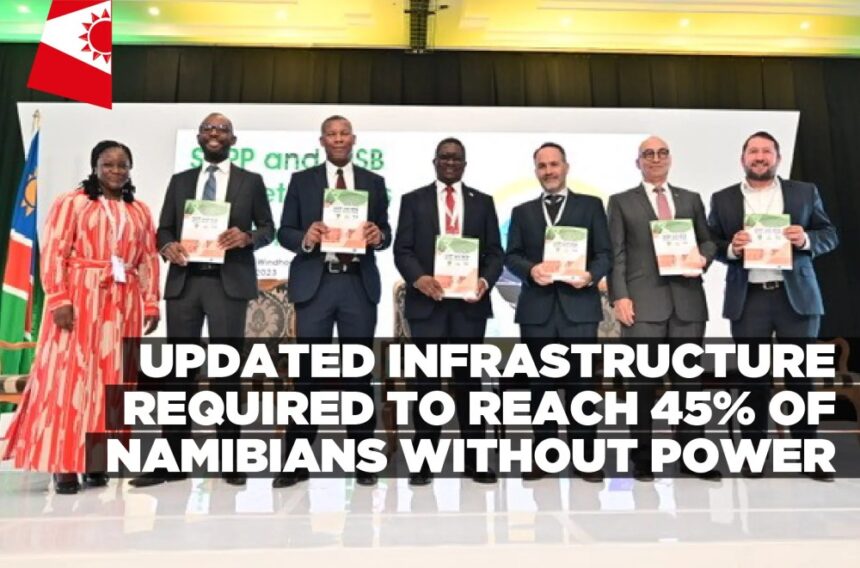Business Reporter
THE Minister of Mines and Energy, Tom Alweendo, has stated that effective regulation for Independent Power Producers (IPPs), investments, and updated transmission and distribution infrastructure are necessary to reach 45% of Namibians without electricity. This revelation came from the acting executive director of the Ministry of Mines, Brian Eiseb, who delivered the speech on behalf of the minister during the launch of the Guide to Support Independent Power Producers (IPPs) in accessing the national and regional energy trading market. The guide was launched at Namibia’s MSB and SAPP regional market conference currently taking place at the Mercure Hotel.
In 2019, Namibia introduced the Modified Single Buyer (MSB), effectively opening up the electricity market to the private sector by permitting Independent Power Producers to generate and directly sell electricity output to regional electricity distributors, large industrial and mining companies, as well as municipalities. This is a departure from the single buyer model where electricity output can only be sold to NamPower.
Eiseb shared that according to the Ministry’s National Integrated Resource Plan, the country aims to reduce its electricity imports from the current 70% to at least 30% by 2028. He added that for this to be achieved, effective regulation needs to be discussed at Namibia’s Modified Single Buyer (MSB) and the SAPP regional market conference. Furthermore, he noted that not only investments will be needed to boost the market, but also updated transmission and distribution infrastructure to enable the connection of 45% of Namibians currently without power. He highlighted that Namibia still has a significant way to go in terms of universal coverage, with its current generation rate of 72% in urban areas and a mere 35% in rural areas.
“Our vast natural resources of renewable energy are crucial for energy security, not only for Namibia but for SAP as well. Our ministry’s mission is to develop policies that unlock this potential by creating an investment market conducive to competition and affordable electricity, which is a significant challenge… The 22 IPPs with a total installed capacity of 162 megawatts already generating renewable energy are proof of growth,” Eiseb said.
Remarks shared on behalf of the Managing Director of NamPower, Simson Haulofu, however, revealed that the country has experienced a decline in its energy market participation. Haulofu indicated that the opening of markets should be responsible, stating that while this presents a good opportunity for private companies, national utilities have the responsibility to sustain the economy over a prolonged period.
“As I stand before you today, despite considering a broad spectrum of scenarios, our predictions in our strategic plan were wrong. In recent months, there has been a decline in interest in local energy markets, while at the same time, there is strong interest in exporting locally produced energy, especially into the Southern African Power Pool (SAPP) markets, with over 1 gigawatt in export licenses and more than 600 MW of export transmission connection applications applied for or issued,” Haulofu said.
He further added that the need for new generation capability cannot be overstated, especially in the field of renewable energy.



Leave a Reply